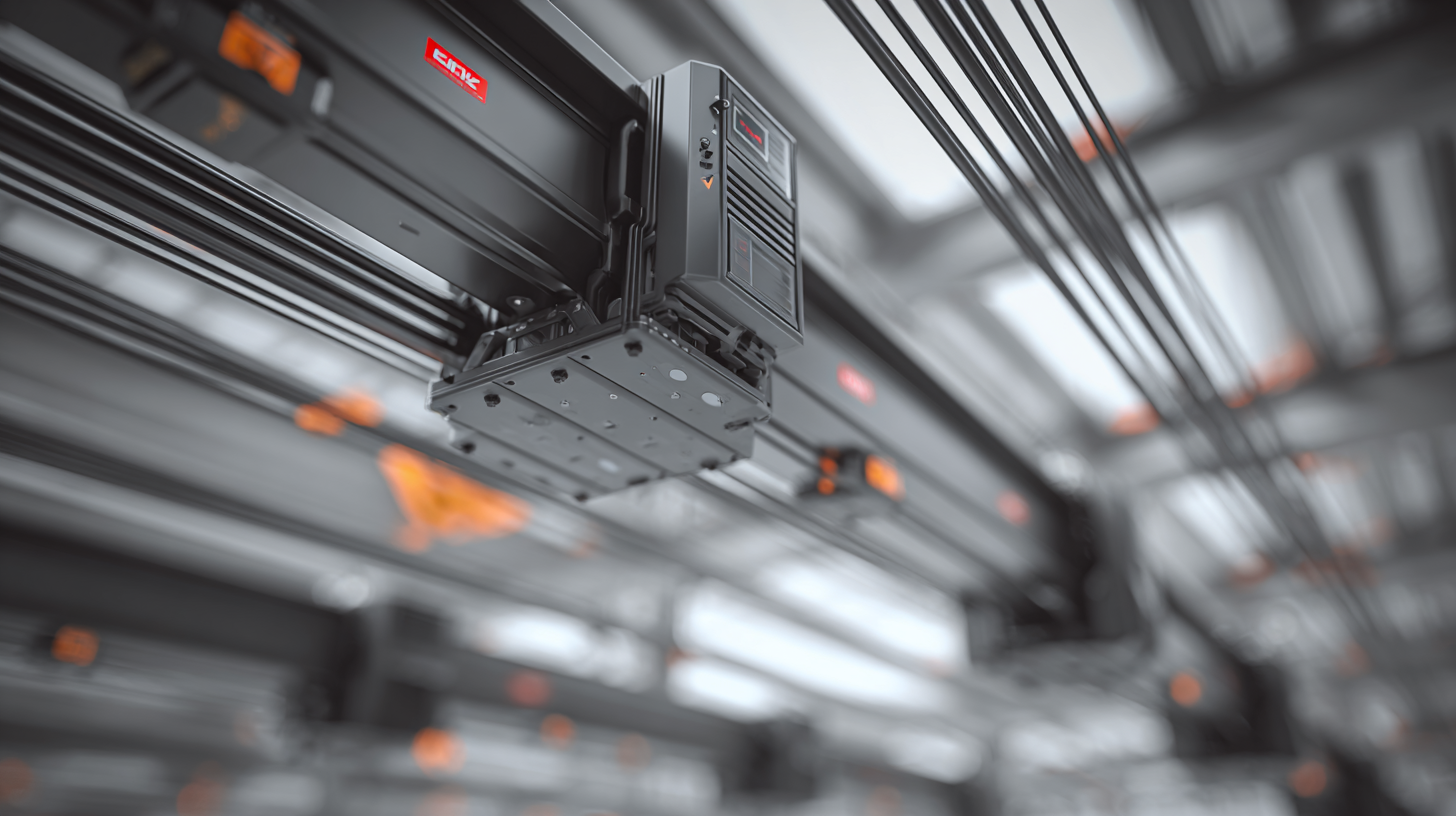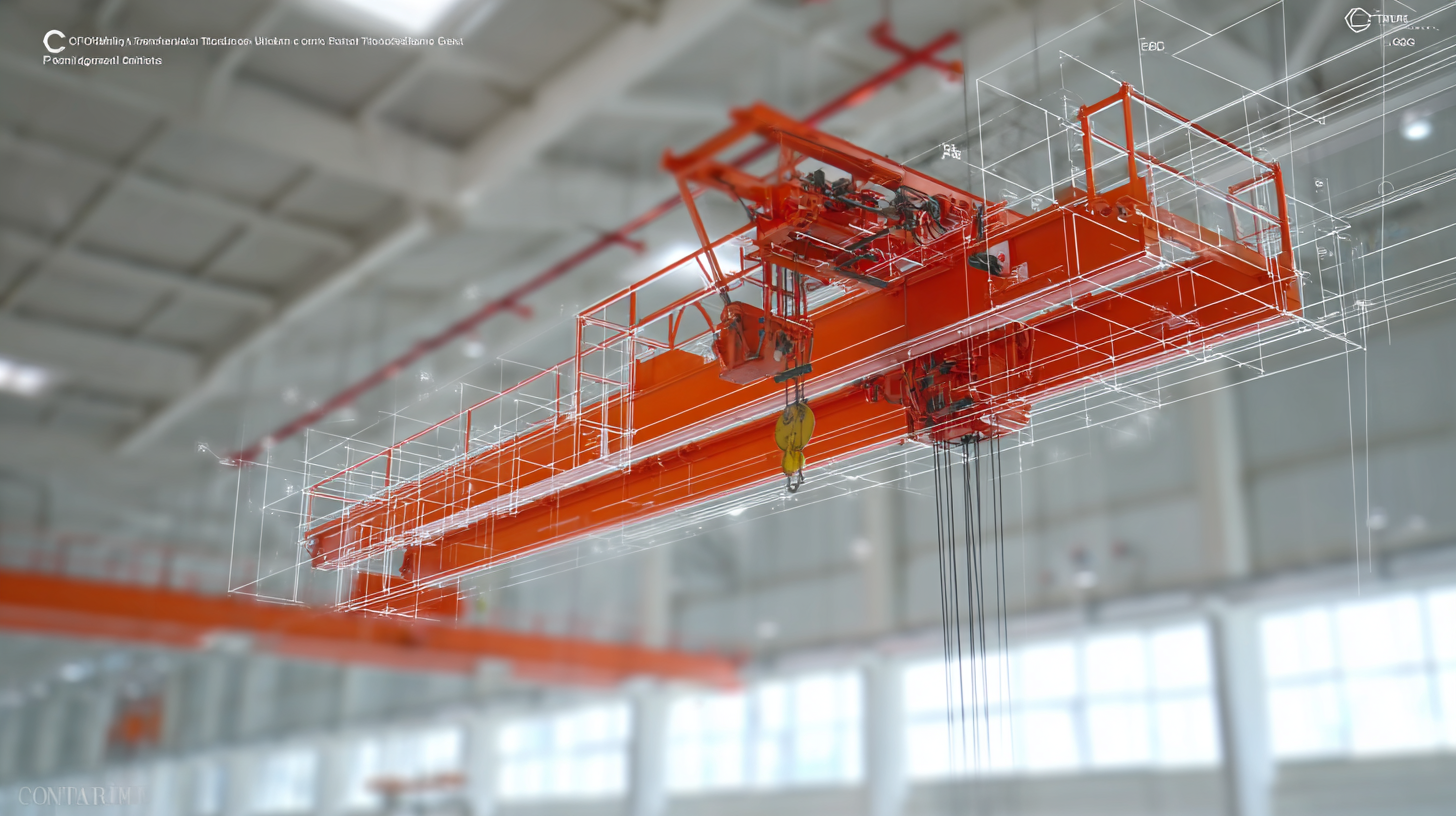Inquiry
Form loading...
-
Phone
-
Wechat

-
Whatsapp

As industries evolve, the demand for efficient and innovative solutions grows significantly, particularly in material handling applications. Ceiling cranes, which allow for the efficient transportation of heavy materials across various industrial sectors, have emerged as a crucial component in boosting operational efficiency. According to a recent report by MarketsandMarkets, the global overhead cranes market is projected to reach USD 5.63 billion by 2025, driven by the rapid industrialization in emerging economies, including China. This underscores the importance of advanced ceiling crane technology in enhancing productivity and safety standards in manufacturing processes. As we delve into the innovations shaping tomorrow's ceiling cranes, we recognize that "卓越制造,源自中国,服务全球" embodies a commitment to excellence in engineering and service that transcends borders and industries.

The landscape of modern industrial solutions is rapidly evolving, with ceiling crane technology leading the charge in enhancing operational efficiency. Today’s advanced ceiling cranes are equipped with features designed to optimize performance and ensure safety. One of the key features is the integration of smart technology, enabling real-time data monitoring and predictive maintenance. By utilizing sensors and IoT connectivity, these cranes can provide actionable insights, reducing downtime and improving productivity.
Another significant advancement is the enhanced load management capability. Modern ceiling cranes come with sophisticated load sensors and automatic load monitoring systems that ensure precise handling of materials, reducing the risk of accidents. Moreover, the incorporation of modular designs allows for greater flexibility in installation and customization, accommodating different industrial environments. These features not only streamline operations but also contribute to a safer workplace by minimizing the chances of operator error and equipment failure. As industries continue to embrace innovation, ceiling crane technology will play a crucial role in shaping efficient and sustainable manufacturing practices.

Ceiling cranes have become integral to various industrial applications, thanks to their versatility and efficiency. According to a report by the Industrial Crane Association, the global ceiling crane market is expected to reach $4.5 billion by 2026, driven by increased demand for material handling solutions across industries such as manufacturing, construction, and warehousing. Different types of ceiling cranes, including bridge cranes, gantry cranes, and monorail systems, can cater to diverse operational needs, enhancing productivity and safety in work environments.
Bridge cranes, in particular, are widely used in manufacturing plants where heavy loads need to be transported over long distances. Their ability to provide smooth and precise load movements allows for optimal workflow. A study by Market Research Future indicates that the bridge crane segment is projected to exhibit a substantial CAGR of 6.2% from 2021 to 2028. On the other hand, gantry cranes are favored in outdoor applications, such as shipyards, where they facilitate the loading and unloading of containers. The adaptability of these cranes to various configurations and load capacities makes them essential for companies aiming to optimize their operational efficiencies.
With advancements in technology, such as the integration of IoT and AI, ceiling cranes are evolving to provide enhanced tracking and predictive maintenance, further solidifying their role in modern industrial solutions. The continuous innovation in ceiling crane technology ensures that businesses can adapt to changing demands while maximizing productivity.
The modern industrial landscape is rapidly evolving, and one of the key innovations enhancing workplace efficiency is high-tech ceiling crane technology. These advanced cranes are designed to optimize space utilization while improving the speed and safety of material handling. Unlike traditional ground-based cranes, ceiling cranes utilize overhead space, allowing for seamless movement of heavy loads without obstructing the floor area. This not only maximizes workspace but also minimizes the risk of accidents, providing a safer environment for workers.
In addition to their spatial advantages, high-tech ceiling cranes are equipped with smart features such as automation and advanced control systems. These technologies enable precise load management and integration with existing warehouse systems, streamlining operations and reducing the time required for tasks. By automating repetitive lifting processes, businesses can decrease labor costs and increase productivity, allowing employees to focus on more value-added activities. Overall, the adoption of ceiling cranes signifies a shift towards more intelligent and efficient industrial solutions, signifying a brighter and more productive future for workplaces everywhere.

In recent years, the industry has witnessed significant advancements in ceiling crane technology, particularly concerning safety enhancements crucial for efficient industrial operations. The adoption of remote control and monitoring innovations has fundamentally transformed crane operations, enabling increased productivity while minimizing risks associated with heavy lifting tasks. With the crane market projected to grow from approximately USD 49.4 billion in 2025 to USD 70.4 billion by 2035, a compound annual growth rate of 3.6%, the emphasis on safety improvements remains paramount.
One of the most critical safety enhancements includes the integration of anti-sway technology, which has become a sought-after feature in crane modernization projects. This technology plays a vital role in ensuring load stability during lifting operations. Furthermore, the creation of a robust safety culture within organizations is driving the demand for these advanced solutions, as highlighted in industry analyses. Embracing such technologies not only enhances safety but also supports businesses in meeting the growing demands of sectors like construction, mining, and renewable energy.
Tips: Always ensure cranes undergo regular maintenance checks to promptly address any issues that may compromise safety. Additionally, invest in employee training on the latest safety protocols and technology to foster a well-informed workforce. Prioritize innovations that allow for real-time monitoring to catch potential dangers before they escalate.
| Dimension | Current Technology | Innovative Solutions | Safety Enhancements |
|---|---|---|---|
| Lifting Capacity | 5 Tons | 10 Tons with Advanced Robotics | Load Monitoring Systems |
| Span | 20m | 30m with Modular Design | Improved Stability Mechanisms |
| Power Source | Electric | Hybrid Power Systems | Emergency Power Backup |
| Control System | Manual Control | Automated Control with AI | Remote Monitoring and Alerts |
| Maintenance Frequency | Every 6 Months | Predictive Maintenance Using IoT | Automated Safety Checks |
The future of ceiling crane technology is poised for transformative innovations driven by advancements in digital intelligence and automation. The recent gathering of industry leaders in Xuzhou, China, highlighted the critical role that smart technologies play in reshaping industrial solutions. As reported, the crane market is projected to grow significantly, with an estimated value of $26.3 billion in 2023 and a compound annual growth rate (CAGR) of 6.9% expected from 2024 to 2032. This growth necessitates the integration of cutting-edge technologies that enhance operational efficiency and sustainability across sectors.
As industries increasingly prioritize high-quality development, the adoption of advanced systems in material handling will become essential. Innovations such as machine vision and RFID technologies are integral to this evolution, enabling more flexible production capabilities and reducing operational costs. These developments underscore the importance of seamless integration between digital and traditional manufacturing processes, fostering an environment where efficiency and innovation go hand in hand. The evolution of ceiling crane technology will not only streamline operations but also set a benchmark for future industrial practices.
